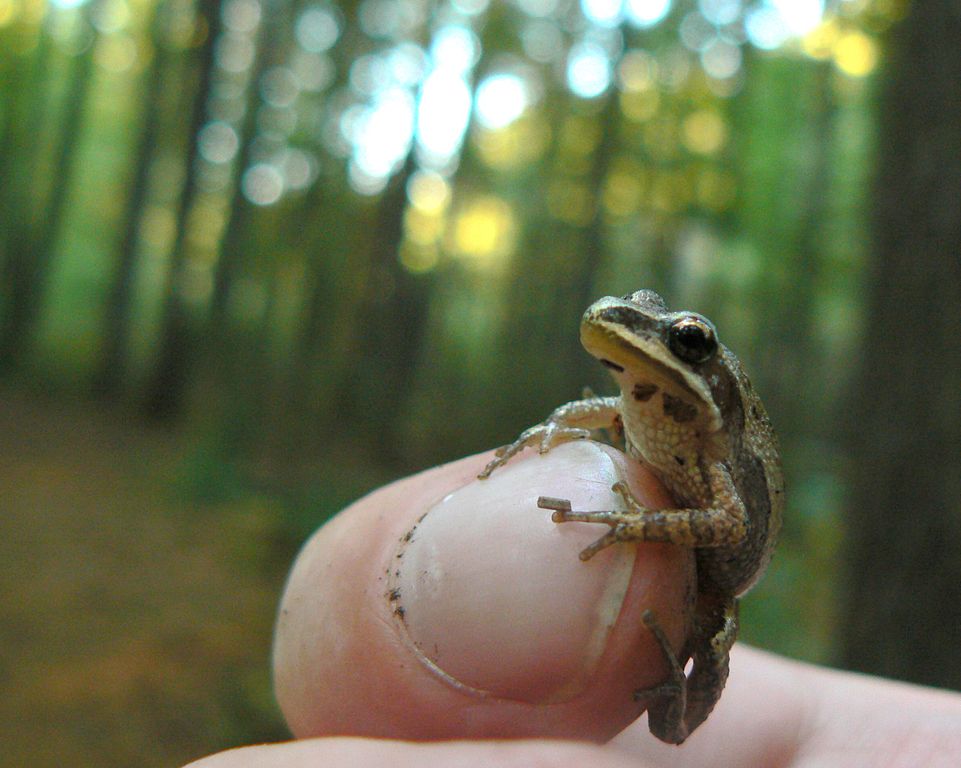Canada’s 7 Species of Treefrogs

Valerie Assinewe,
Guest Blogger
Throughout the spring and summer months, treefrogs will be one of the species that you may be so lucky to encounter! Here is some information about these mostly heard but rarely seen amphibians:
Where do they live?
In Canada, there are seven species of treefrogs:
- Boreal Chorus Frog (Pseudacris maculata) found from British Columbia to Quebec, Northwest Territories, and the Yukon Territory.
- Cope’s Gray Treefrog (Hyla chrysoscelis) found in Manitoba and western Ontario.
- Gray Treefrog (Hyla versicolor) found from Manitoba east to New Brunswick.
- Northern Cricket Frog (Acris crepitans) found on Pelee Island, Ontario.
- Pacific Treefrog (Pseudacris regilla) found only in British Columbia.
- Spring Peeper (Pseudacris crucifer) found from Manitoba to Prince Edward Island.
- Western Chorus Frog (Pseudacris triseriata) found in southern Ontario and southern Quebec.
What do they look like?
Generally, treefrogs are not easy to see because they are so small—averaging 4 cm in length—and they have the ability to camouflage. They are typically grey, green or brown blending into their tree or shrub habitat.
The Spring Peeper, the Western Chorus Frog and the Gray Treefrog are within the same range. Here are some markings that will help you identify them:

Western Chorus Frog by Benny Mazur (CC BY 2.0)
- The Spring Peeper is distinguished by a dark X on the back.
- The Western Chorus Frog has three dark continuous or broken lines down the back.
- The Gray Treefrog has a light spot with a dark border under each eye and bright orange/yellow inner thighs.
What do they eat?
As tadpoles, they are insectivores. Adults are carnivorous, feeding on insects, worms and spiders.
How do they reproduce?
Spring is typically the breeding season for the treefrogs, except for the cricket frog that breeds in summer. Depending on the species, the females lay up to 2000 eggs on aquatic plants. Within days, the eggs hatch becoming tadpoles. By midsummer, they transform into frogs leave the water, climb the trees, and live there until fall. Most treefrog species rarely live beyond three years.
Did you know?
- Canadian treefrogs spend their winters under leaf litter, rocks, logs or tree bark. They have the ability to increase the amount of glucose in their bodies. The glucose with a small volume of water acts as a cryoprotectant, which prevents organs from freezing in our cold winters.
- The sticky disks on their toes help them adhere to bark, branches and twigs.
- They are prey to a wide variety of predators including birds and mammals. When young, the tadpoles may also be prey to fish.
Next spring go for a ride in the country and listen to the mating calls of the treefrogs. If you are able to identify these frogs, be sure to record your findings with FrogWatch!



